Just for Fun: The Best of Beijing – Things to See & Do
Just for Fun (“JFF”) is a sporadic series on China Law & Policy where we take a break from the more serious aspects of China’s development. JFF often features movie reviews, art reviews, or anything else that could be considered “fun.”

Few cities have seen as much change as Beijing. When I lived there in the late 1990s, farmers still entered the city with mule-drawn carts to sell their harvest on some random corner in downtown Beijing. They could do that then because many of the farms were just outside of the fourth ring road. Today, fruits and vegetables are largely bought in supermarkets. Flashy office buildings fill the skyline and luxury cars line the roads. In less than two decades, Beijing has transformed from a sleepy capital city into a major, modern metropolis.
But echos of the past still fill the streets and tourists – if they know where to look – can still see customs that are centuries old. Old men still walk their birds every morning; candied hawthorn sticks are still hawked by street sellers; and women practice their taichi early in the morning in Beijing’s various parks. For a first time visitor, here are some things that China Law & Policy thinks should not be missed.
Jingshan Park at Dawn
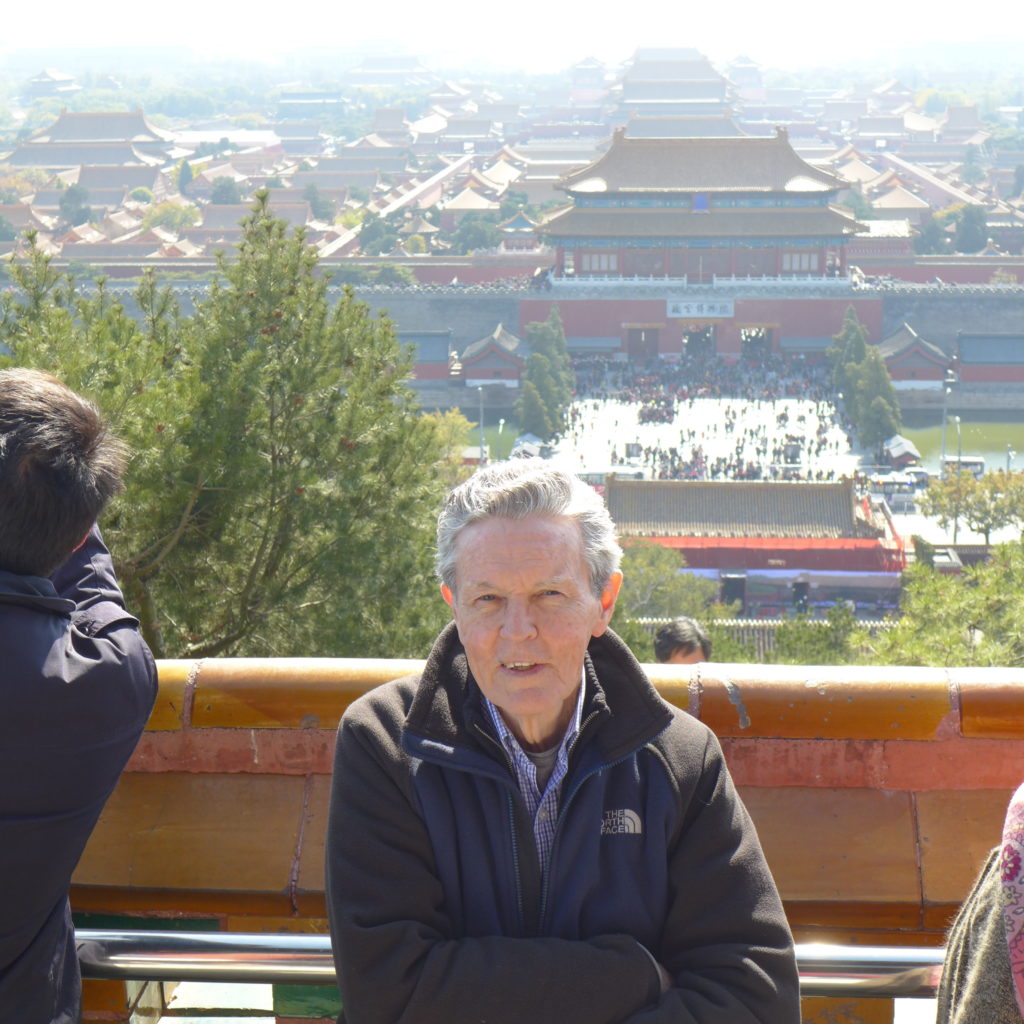
Here is a secret about Beijing. Although it is a city of over 21 million people, you can have a little bit of it to yourself very early in the morning. So learn to love your jetlag and just get up when your body tells you to, which, for most people traveling from the United States, will be around dawn. One place you want to visit that early in the morning is Jingshan Park. Jingshan Park sits right behind the Forbidden City. The hill that is the park’s defining feature was created from the dirt that was dug up to make the Imperial Palace’s moat, and it offers some of the most spectacular views of Beijing. As soon as you enter the park, follow the signs that take you to the top of the hill. In a few hours, the hill will be a mad house but at 7 in the morning you could easily be the only one at the top. Enjoy the silence, the view and the light breeze across your face. Just to the south you will see the shimmering yellow rooves of the Forbidden City – on a sunny morning, the rooves will glow. But even on a cloudy or rainy day the view is not to be missed. And don’t forget to look at the other views – on the north side you will see the Drum and Bell towers; to the west will be the white pagoda of Houhai. Enjoy it for as long as you like, knowing that for hundreds of years, others have shared in this view. Then walk down and watch the senior set doing their taichi exercises.
Walk the Hutongs
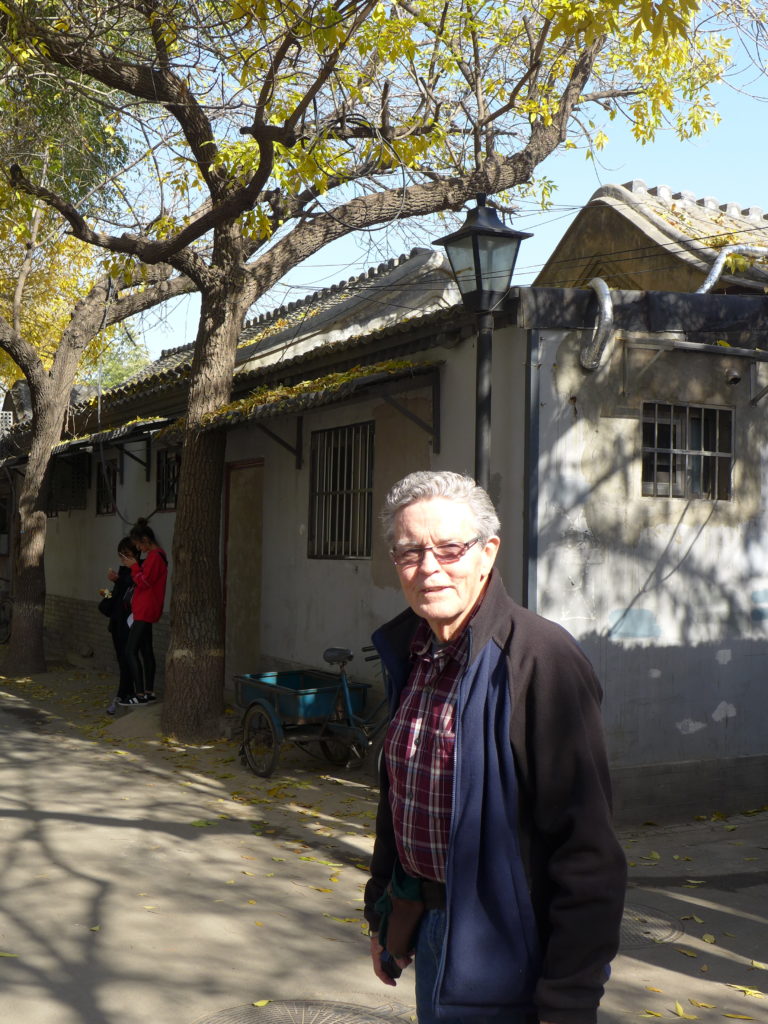
Hutongs – the alleyways where Beijing residents have lived since the Yuan Dynasty (1279-1368) – are unique to northern China. No other place in the world has such architecture and it is a pity to not spend some time exploring these lanes. At one point the entire city was made up of hutongs but unfortunately, with the Chinese government’s desire to make Beijing into a “modern” city for the 2008 Olympics, many of the hutongs were demolished for large, non-descript apartment housing. However, there are still some hutongs left to explore where you can see how everyday life has been lived for centuries. One hutong area is the between the Drum Tower and the Lama Temple. This area has become westernized and you will find bars, coffee shops and high-end restaurants that cater to the expat crowd. But I do enjoy sitting in Café Confucius, having a nice latte with their cat, and watching everyday life pass by. If your travels do not take you to that area, you can also explore the hutongs just south of Tiananmen known as Dashilar. While a much more commercial district, it’s still a lot of fun to explore.
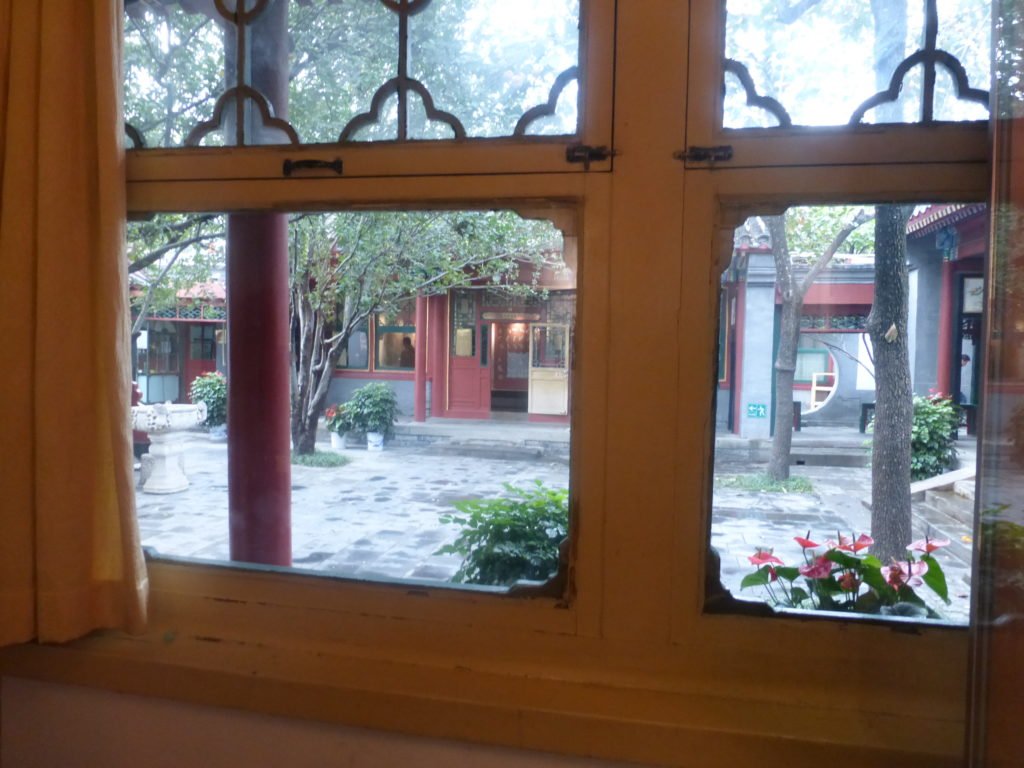
Do remember though that people still live in these hutongs. And while it is completely fine to wander the alleyways, it is not fine to enter into the courtyards where people live, even if the door is open. If you would like to see a traditional hutong home – known as a siheyuan (“four connected wall garden”) – check out the Mei Lanfang Museum over in the Huguosi hutong area, one of my favorite hutong areas. Not only will you be able to walk through a siheyuan home, but you will learn about a rather interesting and charismatic figure in Peking Opera and Chinese history.

Great Wall
Yes, you should go to the Great Wall. It’s mesmerizing to stand atop the Wall and look as it stretches endlessly into the distance. The only real question is, which part of the wall to see. Should you see the is the reconstructed wall or the “wild wall?” I generally recommend the reconstructed wall for a first-timer. And if reconstructed is what you choose, the section to go to is Mutianyu (which if you walk in the direction of watchtower 23, you will hit the wild wall). If there are two or more of you, then hiring a driver to spend the day out there is worth it. The driver generally knows to leave early – the wall opens at 8 AM and, on a weekday, if you are there at 8, you will have some of the wall to yourself. As I mentioned yesterday, I have used Miles Meng’s service the last two times I have visited the Wall and find it well worth it.
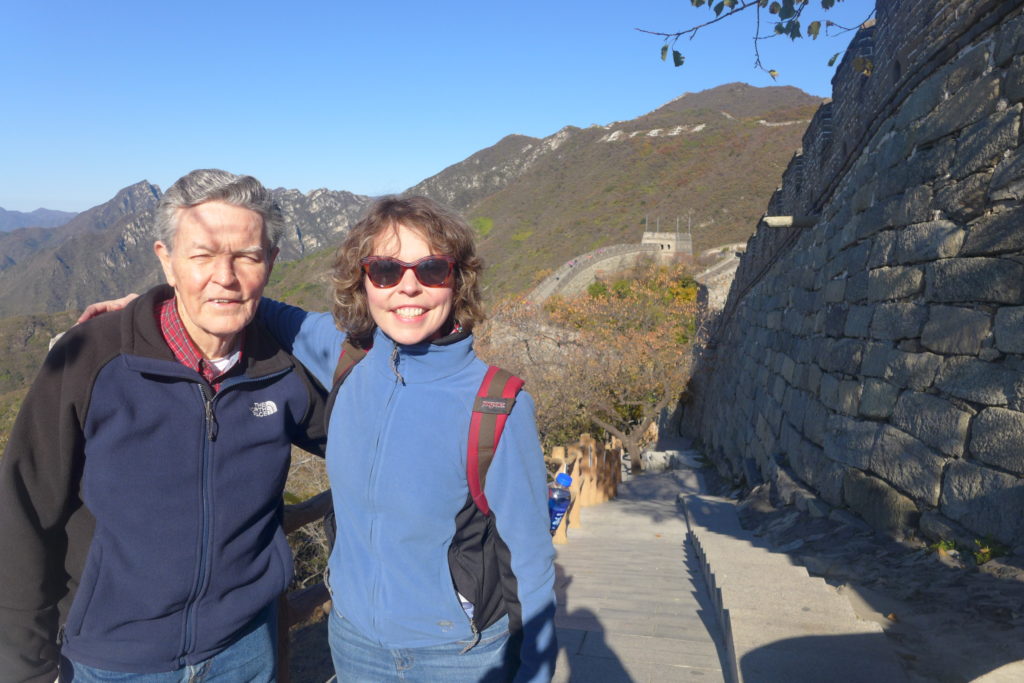
If you want to do the “wild wall,” do not do it alone. I can’t stress that enough. Do it with a group so that you have a guide in case there are any accidents. Sprained ankles are probably the most common, but there are significant drops in certain places where the path narrows. I recommend signing up for a trip with Beijing Hikers. Usually it is a group of 10 to 15 people, with a bus pickup in downtown Beijing. If you are doing the wild wall, do wear hiking shoes.
Summer Palace
After the Great Wall, the Summer Palace is perhaps one of the most extraordinary tourist sites in Beijing. As its name connotes, it was the summer home of the Qing emperors after the Old Summer Palace was destroyed by French and British troops in 1860 (with some of the most prized antiquities of China carted off). While the Summer Palace certainly has buildings that are must sees, it is more than just a palace. It is a massive, beautiful park where you could easily spend a whole day if you have the time. People may say that you only need two hours to “do” the Summer Palace, but this would be a mistake. After seeing the major sites in the park, go off on some of the side paths and enjoy the peace and quiet with spectacular views of the lake and Beijing to the southeast. Bring your lunch as the Summer Palace is a great place to picnic, relax and just have fun.

Lama Temple
Beijing has quite a number of impressive Buddhist temples but the Lama Temple outshines them all. Originally built as a residence for one of the Qing Dynasty princes, the building was converted to a Tibetan Buddhist monastery in 1744 and has remained one ever since. It is still a practicing monastery and if you get there early enough, you might be able to see the end of the morning group prayers. It is something to listen to rather than to watch. In fact, much of the experience at the Lama Temple is about your other senses. Through out the temple complex, the sweet smell of incense will fill your nose and even though it is often crowded, it is quiet enough that you can hear the tinkle of the small bells hanging in the breeze. It is this feeling of peacefulness – in the heart of Beijing – that will be a more lasting memory than any picture.
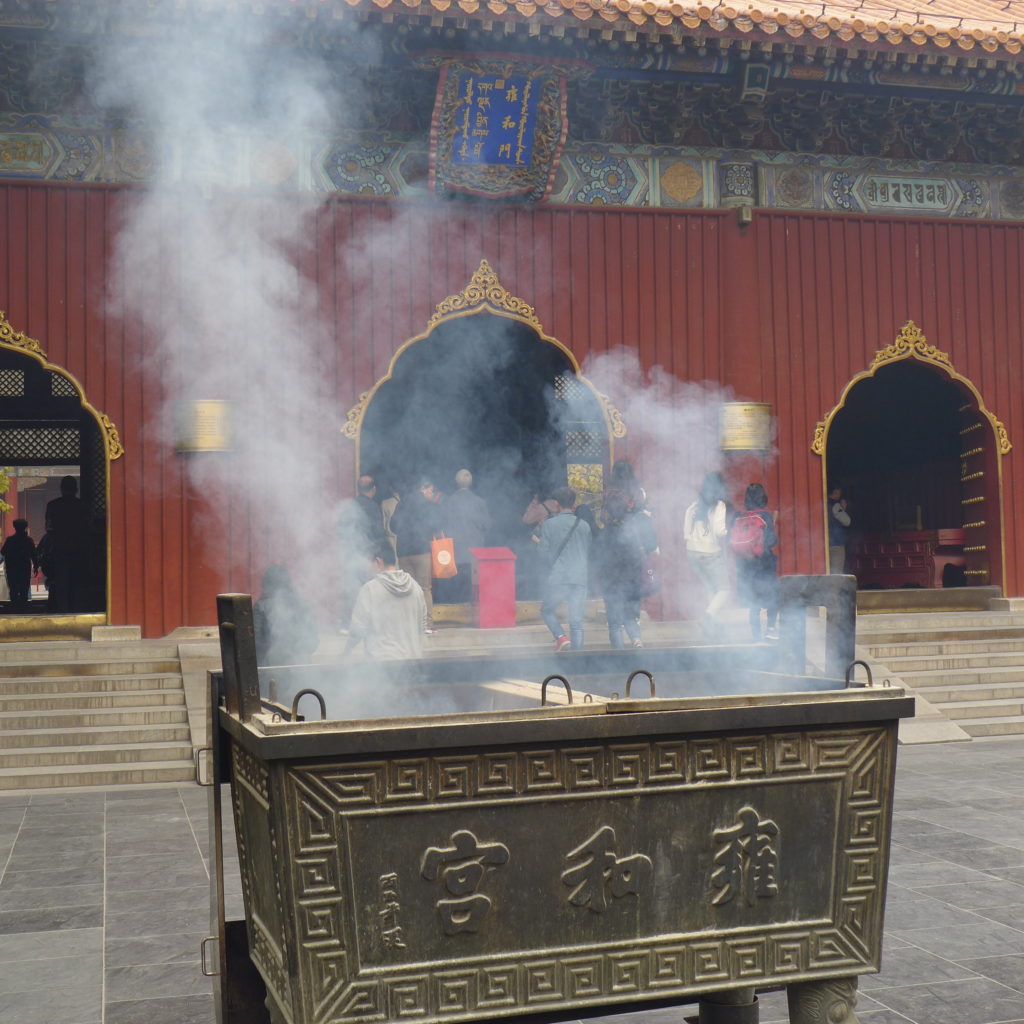
The World Trade Center’s 6th Floor Terrace
Now that you have seen the old, it’s time to bask in the new. The place to do that is China’s World Trade Center (Guomao – 国贸), a massive complex of office buildings, hotels and a multi-floored mall in the southeast corner of Beijing’s Third Ring Road. The two, glass brown buildings at the south of the complex, the ones that look very 1970s, were the original World Trade Center buildings that opened around 1990. I actually worked in one of them in 1999 and at that time, those two towers were surrounded by shanty towns. Today, those towns have been replaced by some of China’s most impressive, glittering architecture, including the imposing CCTV tower. And there is no better place to view Beijing’s modern architecture than from the 6th floor terrace of the World Trade Center mall. If you find yourself getting lost in the maze of a mall, just follow the signs to the Blue Frog restaurant. The terrace shares space with that restaurant. But no worries if you are not up for a bite. Fortunately, most of the terrace is free and open to the public.

These are just a few suggestions of what to see in Beijing. The most important thing is just being there, in the heart of this vibrant city that is changing the world. Was there something else you did in Beijing that didn’t make the list and should have? Please feel free to comment below about your favorite Beijing experiences. And join us tomorrow as we conclude this series with the all important “what to eat” in Beijing.
 On Facebook
On Facebook By Email
By Email 



